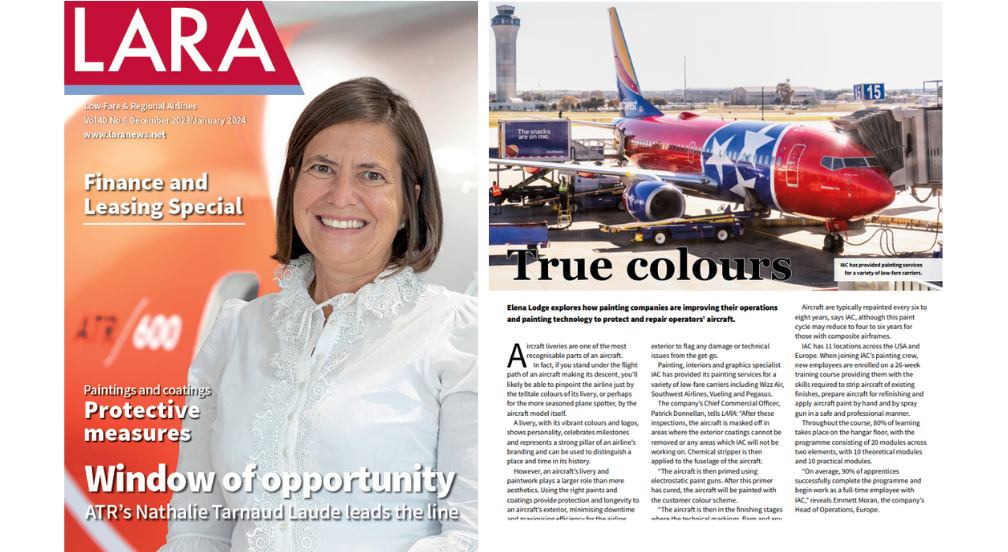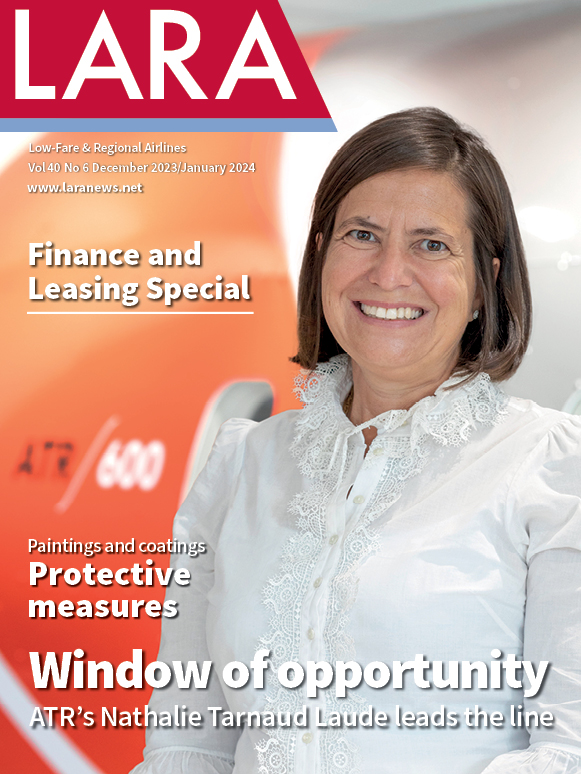Elena Lodge explores how painting companies are improving their operations and painting technology to protect and repair operators’ aircraft.

Aircraft liveries are one of the most recognisable parts of an aircraft. In fact, if you stand under the flight path of an aircraft making its descent, you’ll likely be able to pinpoint the airline just by the telltale colours of its livery, or perhaps for the more seasoned plane spotter, by the aircraft model itself. A livery, with its vibrant colours and logos, shows personality, celebrates milestones and represents a strong pillar of an airline’s branding and can be used to distinguish a place and time in its history. However, an aircraft’s livery and paintwork plays a larger role than mere aesthetics. Using the right paints and coatings provide protection and longevity to an aircraft’s exterior, minimising downtime and maximising efficiency for the airline. Here, some of the companies making and using these paints and coatings explain how.
PRIMED TO PAINT
Before any painting can begin, painters carry out inspections on the aircraft’s exterior to flag any damage or technical issues from the get-go. Painting, interiors and graphics specialist IAC has provided its painting services for a variety of low-fare carriers including Wizz Air, Southwest Airlines, Vueling and Pegasus. The company’s Chief Commercial Officer, Patrick Donnellan, tells LARA: “After these inspections, the aircraft is masked off in areas where the exterior coatings cannot be removed or any areas which IAC will not be working on. Chemical stripper is then applied to the fuselage of the aircraft. “The aircraft is then primed using electrostatic paint guns. After this primer has cured, the aircraft will be painted with the customer colour scheme. “The aircraft is then in the finishing stages where the technical markings, flags and any other relevant aviation authority markings are applied.” A standard narrowbody such as a B737 or A320 will typically take seven days to repaint, compared with 11 to 15 days for a widebody such as a B777 or an A350.
Aircraft are typically repainted every six to eight years, says IAC, although this paint cycle may reduce to four to six years for those with composite airframes. IAC has 11 locations across the USA and Europe. When joining IAC’s painting crew, new employees are enrolled on a 26-week training course providing them with the skills required to strip aircraft of existing finishes, prepare aircraft for refinishing and apply aircraft paint by hand and by spray gun in a safe and professional manner. Throughout the course, 80% of learning takes place on the hangar floor, with the programme consisting of 20 modules across two elements, with 10 theoretical modules and 10 practical modules. “On average, 90% of apprentices successfully complete the programme and begin work as a full-time employee with IAC,” reveals Emmett Moran, the company’s Head of Operations, Europe.
Click on the magazine image below to read the full article


